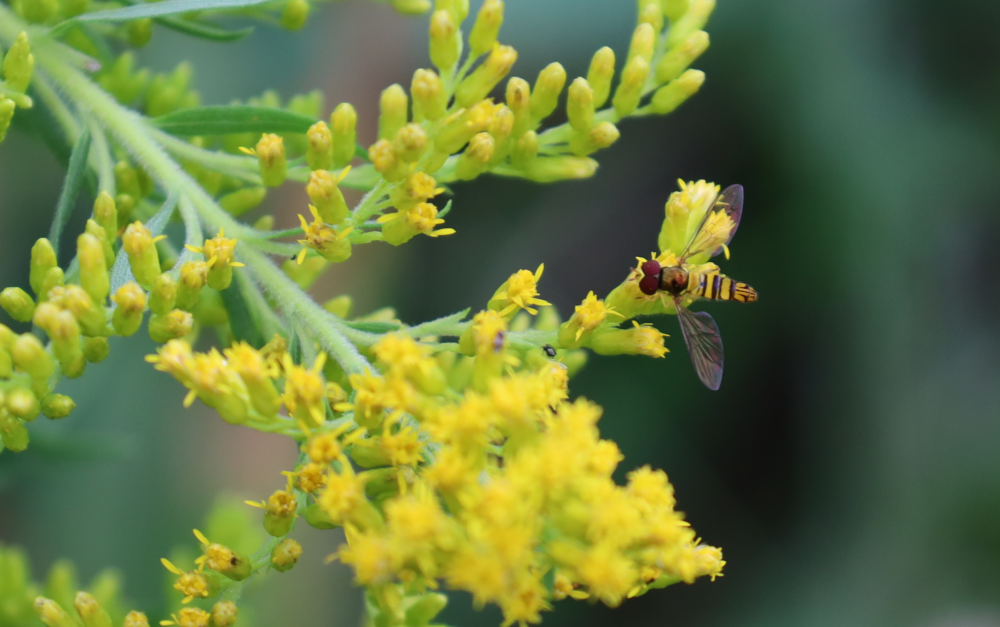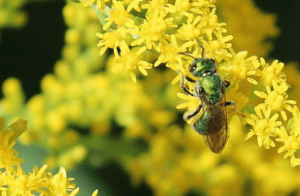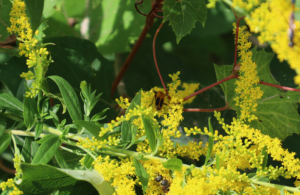
08 Jun Appreciation for different pollinators
When I first entered the world of growing professionally, it was tempting to assume that any new insect was intent on destroying my crops. The acts of placing seeds in the ground and nurturing plants for food are not effortless, nor is the process worry-free – a lot can happen between germination and harvest. So, it makes sense that growers risk falling into the trap of focusing on the pests. However, it is equally important for farmers to learn about invertebrates that work with us – as well as those that are steadfastly neutral with respect to our crops – to successfully steward our land. Many of the crops on our diversified farm rely on pollination services to produce the food we hope to make available to others. Last year, for Pollinator Week, I spent some time learning more about wasps and their role as pollinators. This year, I wanted to explore some other, less well known invertebrates and their powers of pollination.Hoverflies – they’re everywhere
I will readily admit that I have not given much thought to hoverflies (also known as flower flies or syrphid flies) until I started a project four or five years ago to take photos of the insects that we could find around our farm. As I began the work of identifying the insects in these images, I was surprised to find many in the family Syrphidae. Hoverflies can be found on every continent except Antarctica and there are approximately 6,000 known species. Hoverfly populations are often greater than wild bee species, so even if they are less efficient than bees, they can make up for that with their relative abundance. On our farm, we have noticed Oblique Stripetail Hoverflies more often than any other hoverfly. It turns out that these insects are good pollinators and their larva will predate on aphids, one of the pests we want to control on our farm. Research on hoverflies has been sparse, but one study suggests that true flies (Diptera) are the second most important order of pollinating insects after Hymenoptera (bees, wasps and ants). Hoverflies are generalists, visiting a wide range of plants looking for nectar as a food source. Unlike most bees, they are not restricted to a limited home range and they can carry pollen over longer distances while foraging or during migration.
Green Bee visiting Goldenrod
Green Bees – showy and shy
Another insect that has had my attention for a while is the Green Bee or Green Sweat Bee. We can’t help but notice them because their sparkling green color is almost startling. The problem for me is that they are a bit shy, preferring not to pose for the camera. And that’s why I am pleased to offer up this cropped photo that provides evidence that I finally succeeded in capturing an image of one. Green Bees will visit a wide range of flowers, though they favor asters, goldenrods and coreopsis in late summer and fall on our farm. Once they emerge in the spring, they will forage until the fall, so they have to adjust their food sources as the year progresses. I have observed them visiting the small flowers on maple trees in the early spring and squash flowers in the summer. Green Bees are typically ground nesting, though some will use hollow twigs and logs. The parent Green Bee will mix pollen and nectar with their own saliva to leave as a food source once the larva hatches. It has been suggested by some scientists that the saliva keeps the food fresh and helps to protect the eggs in their sealed chamber. Simply knowing a few facts about Green Bees has encouraged me to continue our farm’s program to leave areas of the ground undisturbed, rather than tilling everything. It also solidifies our desire to leave leaf litter and brush piles as natural areas.
Soldier Beetle on Goldenrod

